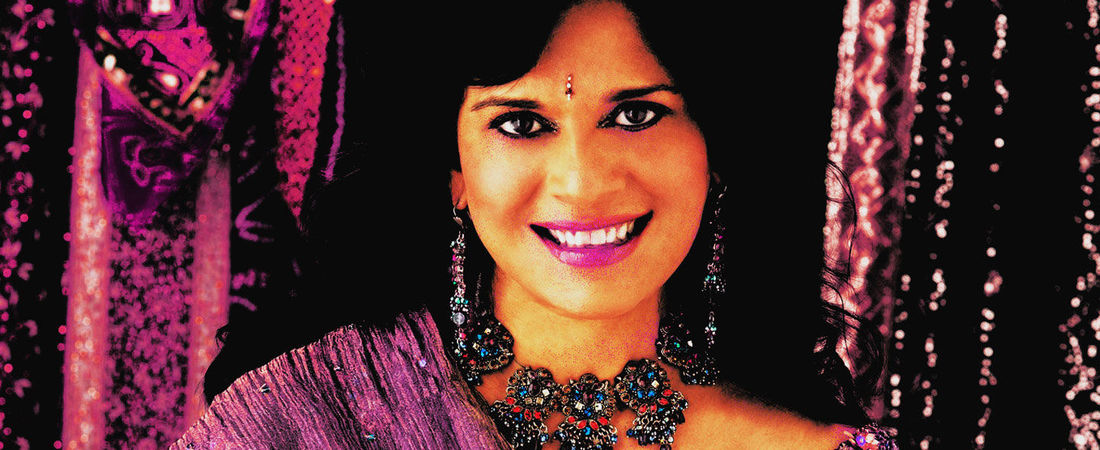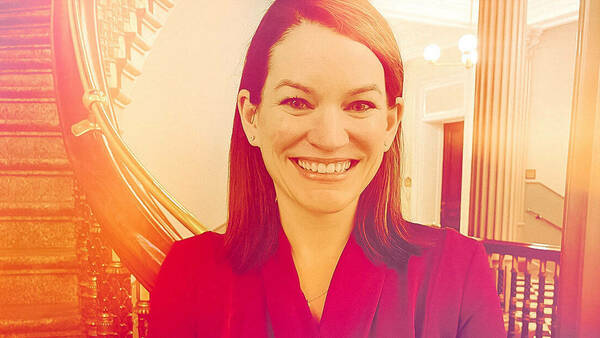Patti Tripathi ’88 developed a tenacity that allowed her to achieve impressive professional success, becoming a news anchor for CNN. But her personal journey is even more remarkable. After navigating the fallout from a traditional Indian marriage, she has made an impact worldwide by using her voice to advocate for women and girls whose voices have systematically been silenced.
What was your childhood like?
I was born in India near the Nepal border where there are no hospitals and no documentation of births was kept. My parents were married very young: my dad was 18 and my mom was 14—it was an arranged marriage like so many are in our culture.
My father was a child prodigy, a Ph.D. in physics at a very young age who began teaching in his early 20’s at a university in India and who was selected as a Commonwealth Senior Academic Staff Fellow. We traveled to the U.K., where he was a visiting scholar. When I was about twelve, my dad ended up at the Notre Dame Radiation Lab as a senior scientist.
Growing up, my brothers and I shared a single bedroom in our family’s apartment near campus until I went to college. Our parents had intentions of going back to India but they knew the educational opportunities for us were much better in the States, and my father was able to send money back to India to educate relatives and to help those who endure systematic poverty through no fault of their own.
How did your life experiences shape your desire to do philanthropic work?
After I graduated from Notre Dame, I was introduced to a number of highly educated men for a possible arranged marriage, but I moved away to work for the Arizona Republic. I worked in news media there for two years and then returned to South Bend to work in television and radio and became engaged to a Notre Dame Law School student with whom I had a lengthy long-distance relationship. I moved to Raleigh-Durham to work as a TV reporter, and in 1996 I joined CNN International at its world headquarters in Atlanta as a writer and anchor for CNN Radio and CNN Headline News.
Indian parents fear that divorces are too common in American society and it is better to marry within your own community. Eventually I broke off my engagement and instead succumbed to the expectation of marrying an Indian-American ophthalmologist—someone I didn’t date—for my father’s approval and blessings. There is so much pressure on girls of South Asian origin to oblige by their parents’ wishes that many feel obligated to give up on love for an arrangement. I was very well educated and had my dream career, but the three-year “marriage” (which a court ruled was legally invalid because there was no marriage license) was abusive, and I had to get out.
In 2007, I married a man I had been introduced to two decades earlier, after college. I loaned him money to help him buy into his medical practice, but the the marriage didn’t last long, and when it ended, I literally had nothing. It felt like the courts had failed me again because of a lack of cultural awareness. I was living out of two suitcases in a hotel where I watched women prostitute themselves. As bad as it was for me, I couldn’t get my mind around whatever circumstances they were going through that made them feel like selling themselves was their only choice.
I have an American education, resources, and a family to cushion my fall, yet I felt utterly helpless because of the injustice. Just imagine what torture many in the immigrant community endure because of cultural, legal, and language barriers. After reflecting on my personal travails and a highly publicized gang rape in India, I felt it my calling to raise awareness about these issues. The Saris to Suits concept, inviting women to pose for a purpose, was a way for me to be intentional about trying to make a difference.
What kind of work does your charity do?
We have a signature calendar of inspirational and empowered women of South Asian origin who have a platform to raise greater awareness. The profits from the calendar are given to charities—some of which are chosen by the featured women themselves—for their work toward girls’ education and social justice.
We try to choose beneficiaries that are geographically close to the calendar role models’ locales so that they can leverage fundraising on behalf of the charity and also develop a relationship to inspire the girls or women who are benefiting.
Each woman has a unique story, and each joins hands to raise greater awareness about cultural and gender competency for women’s empowerment. The efforts are meant not only to dignify those who are marginalized, but also to inspire young women and girls to persevere to achieve their American dreams and to stand up for social justice.
How are the women for the calendar selected?
When I read a story or news feature about an Indian or South Asian woman who’s really exceptional, I bookmark it and then start reaching out to them to see if they’d be interested in being featured in next year’s calendar. Others are recommended by various people, including our Saris to Suits board members.
These immigrant women are scientists, physicians, social activists, rape survivors, social entrepreneurs, and athletes, and the photos we take of them are tasteful and illustrative of their dignity and empowerment. What’s most important is that they are role models for all girls, by virtue of their education and overcoming significant obstacles to their success.
What’s on the horizon for Saris to Suits?
The charity is changing and expanding, which is completely surprising to me because I never expected the calendar to become a yearly thing. In April of this year we will have our first fundraising gala. The fundraising has three goals. First, I want to be able to take women business leaders and experts to India to help mentor Indian women in creating their own startup businesses. The second facet is establishing a network for Americans to do social justice and service work in India, to help those who have been victimized by gender inequality and violence. And the third is to encourage South Asian women living here in the United States to do volunteer work in their local communities.
You’ve truly drawn on a set of very painful personal experiences to make a difference for others.
What I went through in my personal life was torture that no one would have recognized while watching me deliver the news, but it turned out to be a calling or social responsibility of sorts. I knew I had to do something, beyond the work I had done on CNN, to make an impact and maybe help change circumstances for other women and girls.
To learn more about the work Saris to Suits does to empower women around the world, please visit saristosuits.org.



